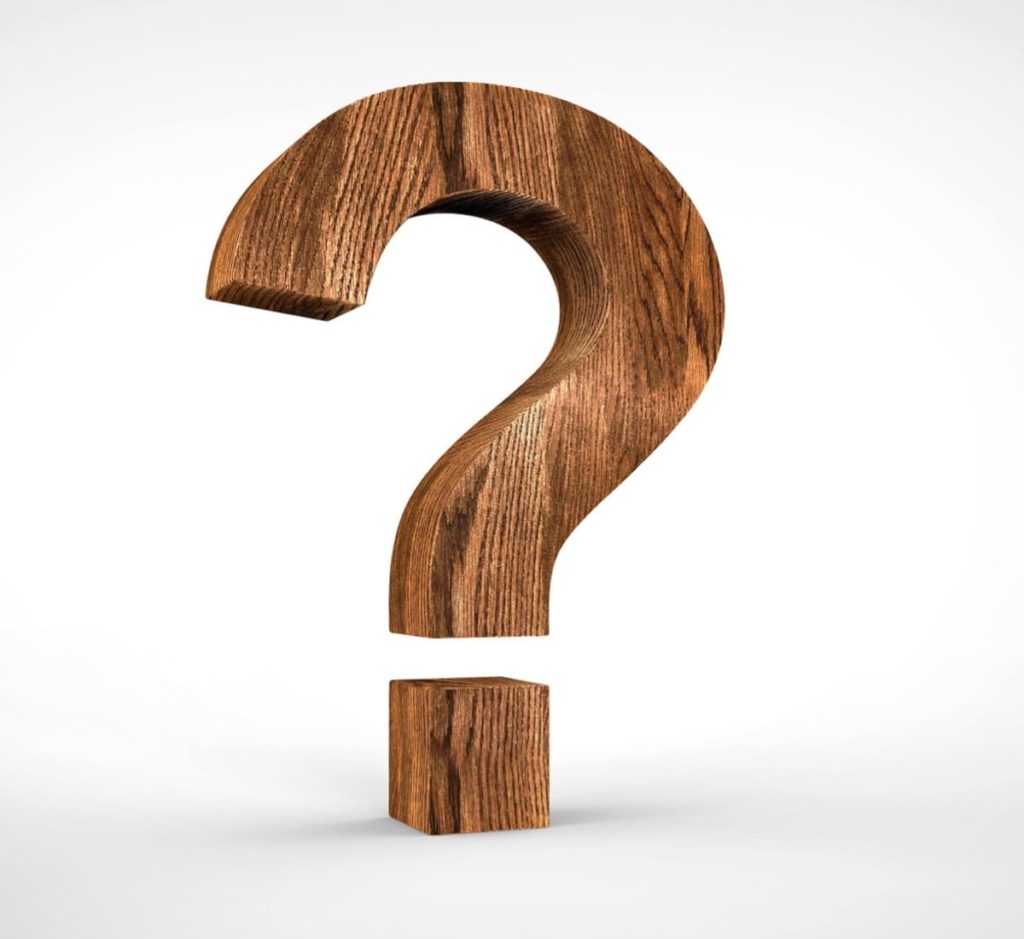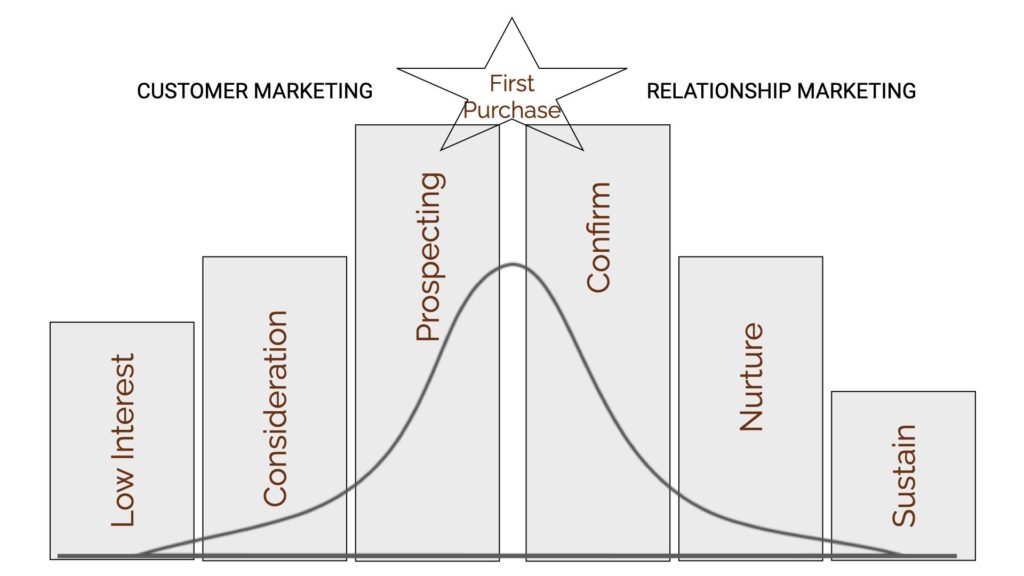Your cart is currently empty!

How Relationship Marketing Maximizes Marketing ROI
Reading Time: 7 minutesAuthor:
This post will discuss relationship marketing and describe how relationship marketing maximizes marketing ROI. We’ll cover what relationship marketing is and what isn’t. We’ll explain why it’s important and worth investing in. We’ll also cover some ways to think about relationship marketing and describe execution ideas that you can use.
What is relationship marketing?
It’s a strategy, but it’s also a mindset. It recognizes that the softer side of marketing has value—frankly, a lot of value. Relationship marketing is a strategy that creates and nurtures value beyond functional benefits. I call this relationship equity, and it’s the only reliable competitive insulation you have.
Relationship marketing has three goals,
- Attract high-quality customers,
- Generate sales for the right reasons, and
- Maximize customer lifetime value.
Incorporating a relationship marketing strategy into your marketing will generate significant mutual value, value for customers, and value for your business.
What Relationship Marketing isn’t
Relationship marketing isn’t transactional marketing.
It isn’t about just making a sale. Sales are essential, but it’s about more than sales in relationship marketing. Its goal is to generate sales for the right reasons.
Relationship marketing is also not magic.
There needs to be a plan that impacts execution. You need to do things. We will describe some of the things you can do later in this post.
Why is relationship marketing important?
Why is it worth investing in relationship marketing?

Back in the day, when I was doing a lot of loyalty program development, I attended a meeting where a researcher presented findings from a customer loyalty survey. The survey investigated why customers were loyal and why they weren’t loyal. He said something interesting during his preamble: in his experience, “most Loyalty problems can be traced to a flawed sales process.”
Think about that for a second.
“Most loyalty problems can be traced to a flawed sales process.”
This simple statement explains why it’s worth investing in relationship marketing, what it aims to accomplish, and why it’s important.
Let’s dig into this a little bit.
Why are loyal customers important?
Loyal customers are important because loyal customers generate revenue in five distinct ways.
- The longer they stay with you, the more revenue they generate after the acquisition cost.
- The longer they’re with you, the less they cost to service; they know how the product or service works.
- The longer they’re with you, the more likely they are to buy again, and again, and again.
- The longer they’re with you, the better they understand your value; you don’t have to bribe them to buy again.
- And finally, loyal customers, passionate customers will advocate for you; they will bring in new customers at zero acquisition cost, customers who often look just like themselves, and customers who are also loyal.

Download our Five Ways Loyal Customers Add Value infographic. Pin it to your wall.
Who’s Relationship Marketing For?
Relationship marketing is not for all of your customers. Relationship marketing is a strategy that should be applied to your best customers.
Now you might ask, what exactly are best customers?
Best customers are heavy category users.
In every category, a small percentage of customers represent the majority of sales. The 80:20 rule: 20% of customers are generating 80% of revenue in the category. The specific numbers may be different, but every category has best customers.
Now let’s consider what these best customers look like.
These customers have a significant need for your product or service.
They have a deep understanding of your offer and a deep understanding of what your competitors are offering.
These are knowledgeable folks. They understand the solutions available. This is an important distinction. These aren’t your everyday folks. Don’t talk to them like they are.
They’re the best customers because they’re invested in the category. This makes them your best target for relationship marketing. They will appreciate what you’re doing for them, and they spend more, a lot more than the average user, which makes best customers worth the investment that’s required to execute relationship marketing.
You must have a customer avatar that describes these prospects. It’s also helpful to map their journey. The better you understand this group, the more likely it will be that your marketing has an impact.
How should you think about relationship marketing?

What are some of the tactical things that you should be considering?
Before the first sale
Give them ways to tell you that they are interested in the category. Select top-of-funnel tactics that will appeal to heavy category users and attract them to the top of your funnel.
It could be quizzes. It could be a short video that explains an industry trend or best practice, or…
There are many ways to let them self-identify and demonstrate that they’re interested in what you have to say.
Now that you have their attention, you want to build trust using mid-funnel microtransactions of increasing value.
What does this mean?
Some examples would be liking a Facebook post or spending three minutes watching a video. These low-value interactions don’t take much effort or cost any money, but they will contribute to building know, like, and trust.
Further down in the funnel, you want to increase the value of the microtransactions. If you give me your email address, I will be happy to send you this ebook, checklist, or this workbook. Providing your email address still isn’t expensive, but it is a richer microtransaction.
With these mid-funnel activities, you’re building the know, like, and trust factors. You’re building a relationship with these prospects.
This is why relationship marketing is not the same as transactional marketing. Its goal is to use “know, like, and trust” opportunities to create a relationship with customers and to generate a sale for the right reasons.
At The First Sale
Your prospect converted.
Fantastic!
But wait, the job’s not done.
It’s said that the most important sale isn’t the first sale; it’s the second sale.
Why is this distinction important?
If you get the second sale, the likelihood of a third sale and more increases exponentially. Transactional marketing focuses on the first sale. Relationship marketing’s goal is to have more customers get to the second sale.
A relationship marketing strategy sees the first sale as an opportunity to reinforce that they’ve made a good choice and communicate that you value their business. It’s the stepping stone to the second sale.
They’ve purchased from you.
Tell them that you appreciate their business.
Say thank you.
Tell them how smart they are, that this was a great choice.
Create additional value.
Show them how to use the product or service more efficiently and effectively.
Transactional emails are a great way to do this. Transactional emails are underutilized and underappreciated. A relationship marketing strategy takes full advantage of transactional emails.
They’ve just signed up for something, and a transactional email arrives that doesn’t just describe the transaction, it says, “thank you very much for purchasing this product. Here are some great ways to use it.”
The first purchase is an opportunity to do more. These customers have given you permission to engage with them. They want you to engage with them. Their interest doesn’t vanish because they completed a purchase. Their interest remains high. Use their interest to create additional value. Use this opportunity to tell them how much you value them and appreciate their business.
Tell them about other resources that they might want to consider. They’re open to it. They’re paying attention. But take note, this is not “sell them.” It’s “tell them.” You’re trying to build a relationship here. They’ve already said, “Hey, I’m with you.” They purchased something from you. Use this opportunity to create value above and beyond your product’s functional benefits.
After The First Sale
After the first sale, you want to look for opportunities to stimulate interaction. Look for ways to create value beyond the functional benefits of your product or service. Make it easy for them to engage and easy to buy from you again.
Use interactions to build a profile of the individual. Learn more about them. Use email marketing. Take note of the links they click in emails. If they’re interested in golf, send them more information about golf. If they’re interested in spa vacations, send them more information about spa vacations. Don’t send everybody the same things.
This is another example of how relationship marketing is different from transactional marketing. You’re taking the time to build the relationship by providing value specific to this customer’s needs and interests, value that’s beyond the functional benefits of your product or service.
And finally, when you’re communicating with customers, communicate in a friendly, natural tone. Speak with them like you know them because they know you. Don’t talk to them like you’ve never met them before.
A conversational tone of voice is very effective for customer communication. It’s not that effective for sales communication, where people are looking for a more cut-and-dry presentation of benefits and reasons why they should believe you. In sales messaging, your tone should be confident and neutral. You don’t know them. But in customer communication, you need to shift your tonality to a friendlier, more casual way of speaking.
Relationship Marketing – Maximum ROI
Having a relationship marketing strategy will take your marketing to the next level.
It helps you attract and convert high-quality prospects for the right reasons and results in more best customers.
It’s a strategy that maximizes customer lifetime value. It creates value for your customers and your business. This mutual exchange of value is another distinctive characteristic of relationship marketing.
And finally, because of all of these things, a small investment in relationship marketing will generate a very significant return on your investment. Not just because you’re doing something special, but because you’re doing lots of special things, and you’re doing these things for a specific group within your customer base, your best customers. That’s where the maximum ROI comes from. These are heavy category users. They’ve got the need and the budget to spend on what you’re selling. You ensure that your products and services are their go-to resource by building a relationship. Your brand is their number one choice.
We’ve just scratched the surface. There’s so much more to relationship marketing. If you want to learn more, go to VIPchatwithjames.com to book some time with me. We’ll chat and see if there’s an opportunity to help each other.
Related Posts
-
Zen Marketing
A thoughtful approach to marketing that brings value to your audience and your business.
-
Marketing Strategy Mistakes to Avoid
Discover the 12 common marketing strategy mistakes that can hinder growth.
-
Your Marketing – A Pile of Parts or a Wheel?
Your marketing isn’t missing effort—it’s missing connection. Making connections turns scattered tactics into momentum.
Author: James Hipkin
Since 2010, James Hipkin has built his clients’ businesses with digital marketing. Today, James is passionate about websites and helping the rest of us understand online marketing. His customers value his jargon-free, common-sense approach. “James explains the ins and outs of digital marketing in ways that make sense.”
Use this link to book a meeting time with James.

